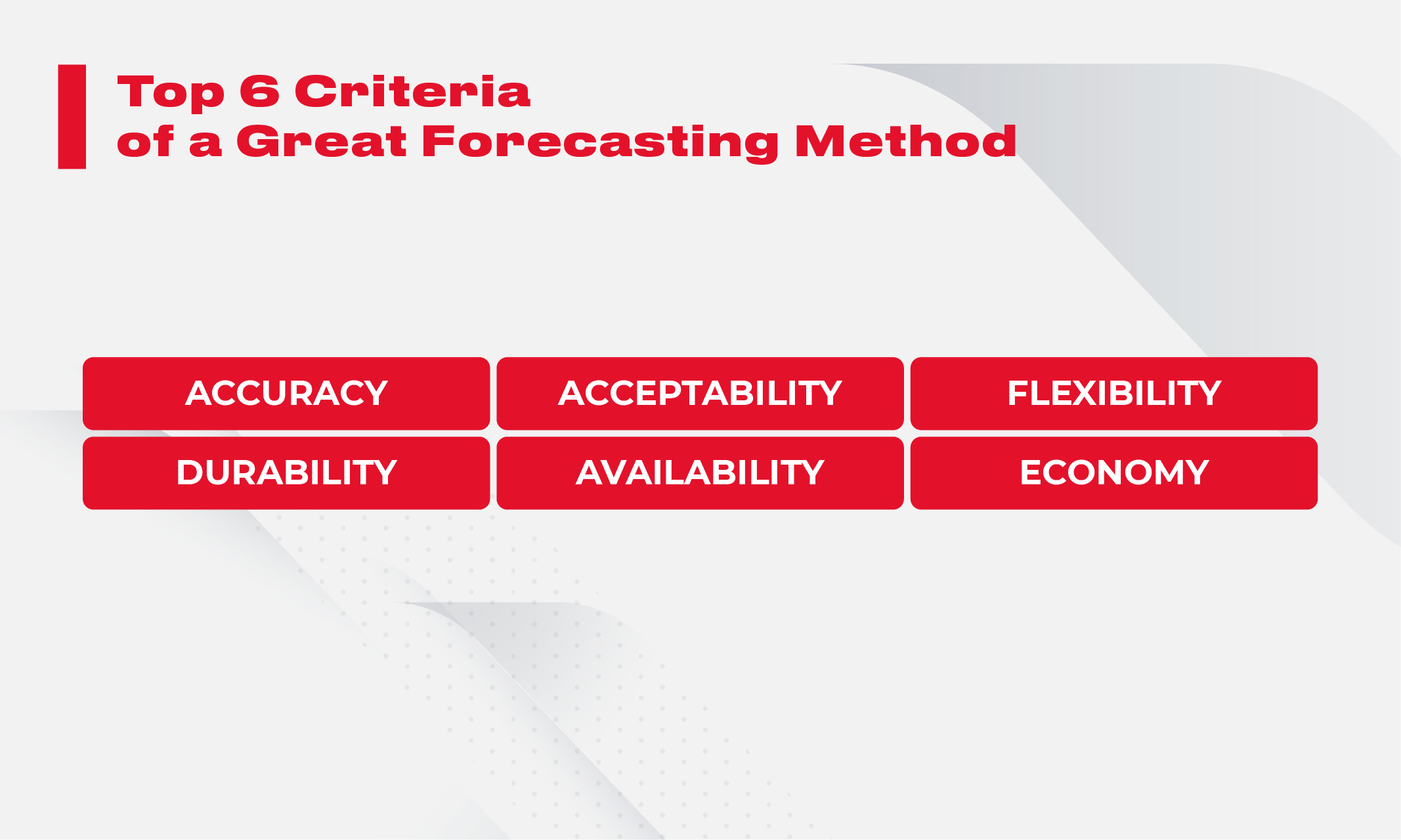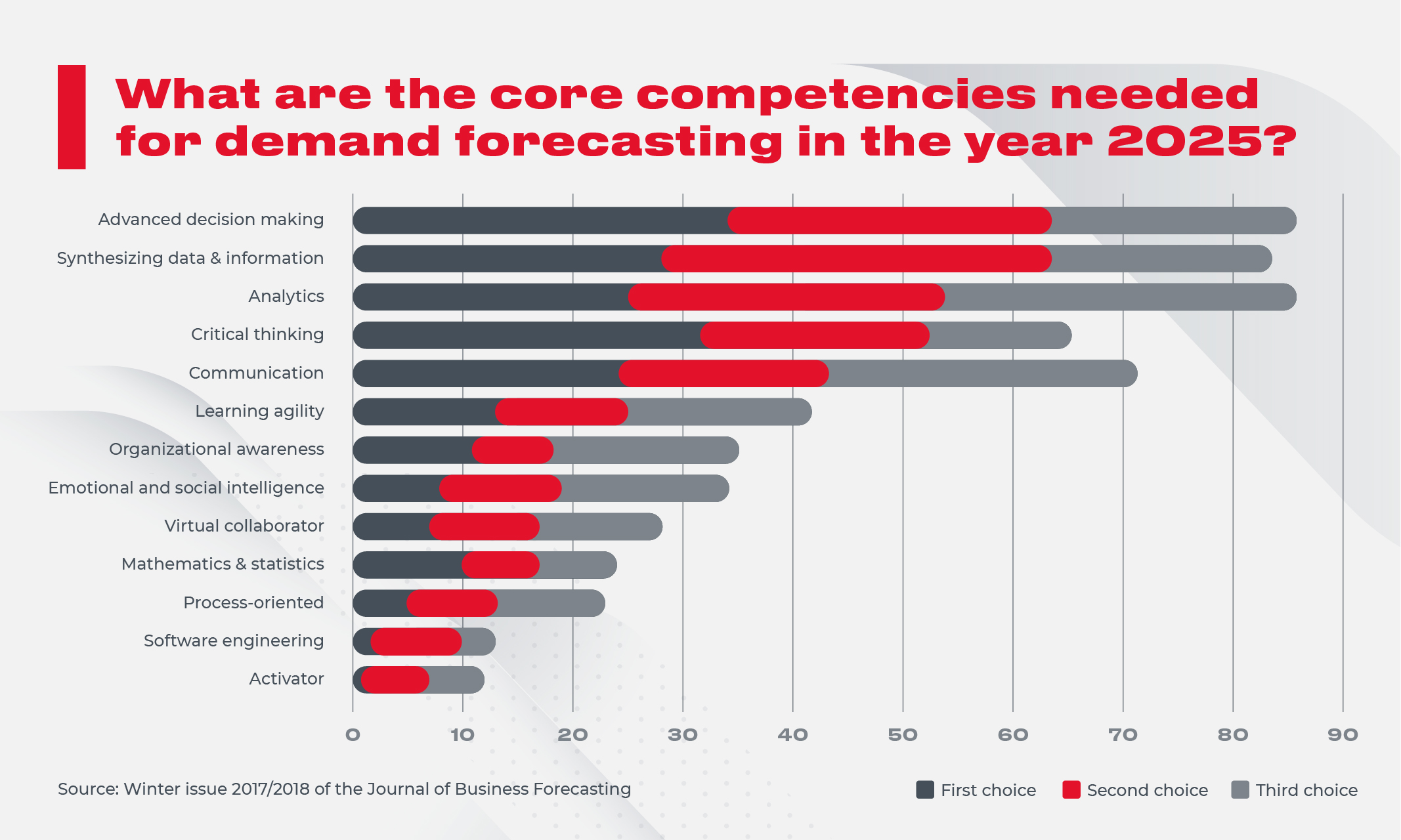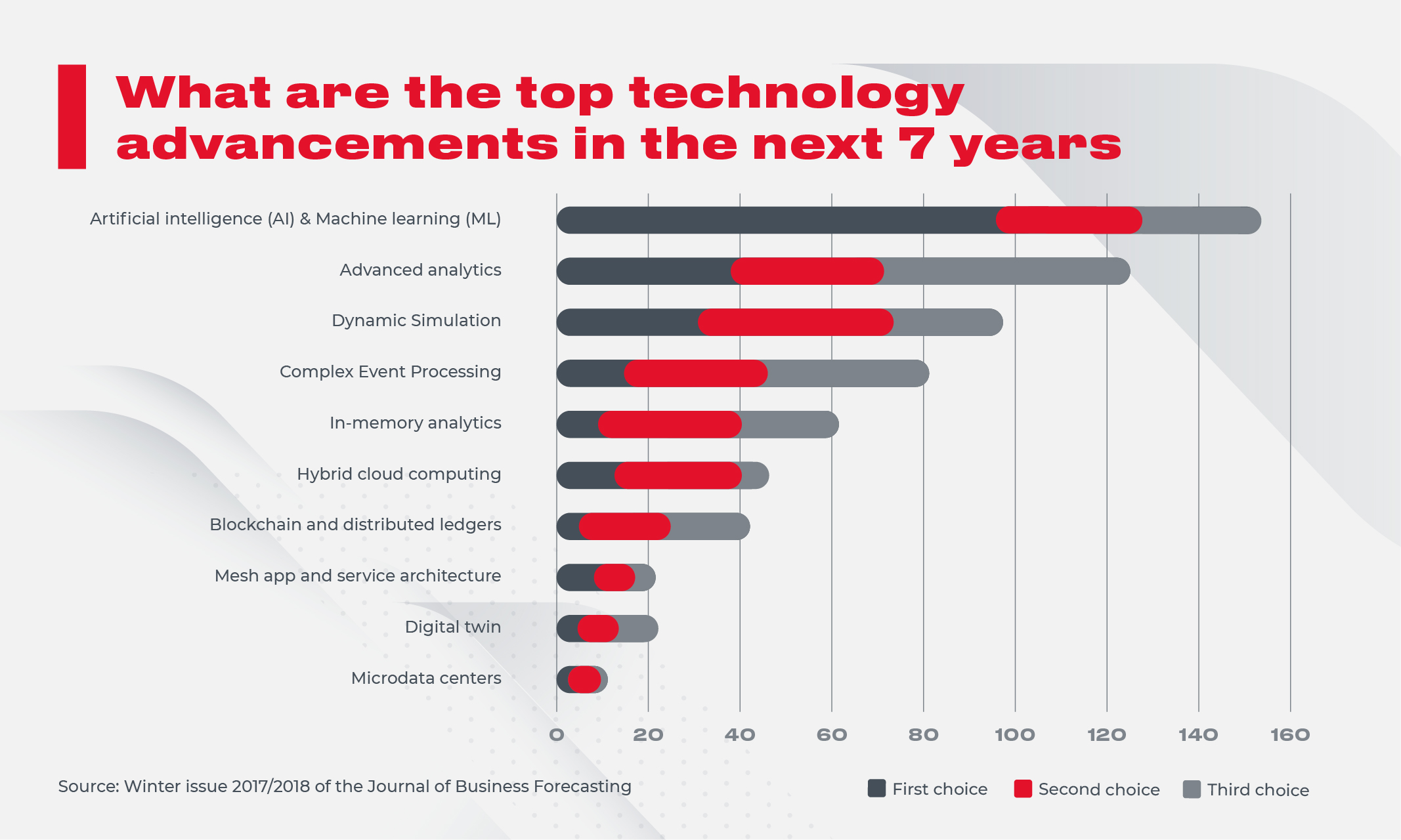Mitigating Risks with Effective Demand Forecasting
What is the most common pain point for a company’s executives? Gartner, the world’s biggest IT research firm, gave a clear answer: demand volatility. Too many reasons—from weather conditions to posts by social media influencers—make buyers change their minds frequently.

Worse still, things that reshape customer demands happen quite unexpectedly. Think, for instance, of how the new coronavirus may affect your forecasting, turning it absolutely upside down.
There is no magic wand to predict global situations like the “coronavirus effect.” But there are technologies to enhance the accuracy of demand forecasting. Although it will never be 100% accurate, it can be trustworthy enough to help you achieve your business goals.
In this article, we look through the most popular forecasting methods, the criteria of a useful prediction, and why it is important for your business.
What is Demand Forecasting?
The demand forecasting notion speaks for itself. It is defined as the process of predicting how the customer demands toward your product or service will change in the future. This can also include factors and circumstances (both uncontrolled and controlled) under which these changes can take place.
There are several types of demand forecasting:
- Passive, the simplest type. No economic trends or statistical methods must be studied and applied. Here, you just foresee the future by analyzing the information about past sales.
- Active forecasting requires market research, plans for expansion, and the launch of marketing campaigns.
- The short-term type works when your company predicts demand only for the next year. Just-in-time supply chain management uses this forecasting with the analysis of real-time sales data.
- The long-term type refers to the process of predicting demand for 1 to 4 years in the future. It helps shape the direction of your supply chain business development.
- Internal business forecasting means uncovering the barriers that might have a negative impact on business growth and slow it down. It helps identify areas that need the biggest focus.
- External macro forecasting means integrating trends in the wider economy and monitoring how they influence your business goals and the overall supply chain.
Detailed information about each you can find in the pictures below.
Among common demand forecasting methods, one can name market research, trend projections, sales force composite, expert opinion (Delphi method), and many more. However, let’s take this theoretical information and move forward with its application in business and planning.
The Role of Forecasting in Demand and Supply Chain Planning
Demand forecasting is one of several components of demand planning. Demand planning itself is defined by the Institute of Business Forecasting and Planning (IBF) as following:
In addition to making predictions, demand planners take part in inventory optimization, ensure the availability of goods needed, and control the difference between forecasts and actual sales. Demand planning uses these forecasts to adjust the supply chain to accommodate the changes in demand.

Methods of Demand Forecasting
The most critical step in demand forecasting is choosing the appropriate method. Demand can be forecasted using qualitative methods or quantitative methods, as explained below.

Top 6 Criteria of a Great Forecasting Method
Each demand forecast has its pros and cons, so it is essential to choose a forecasting model wisely based on the product, market size, competitors, and price factor. However, regardless of the demand forecasting method, some criteria need to be taken care of.

Accuracy: Implies that a company should make forecasts close to real figures so that the real picture of demand can be defined. For example, sales would increase by 20% in the next year would be an accurate forecast.
Acceptability: A company should forecast its demand by using simple and easy methods. Besides, the methods should be such that the company’s executives do not face any difficulties.
Durability: Implies that forecasts should be made in such a way that they can work for the long term as forecasts usually involve a lot of time, money, and efforts.
Flexibility: Implies that the predictions should be adaptable to changes. Today business environments face a rapid change in the preferences of consumers, which affect the demand for products. For example, some airlines have suffered a drop in commercial flights by 4% due to the ”Greta Thunberg effect.” Thus, organizations should reflect those changes in their demand planning.
Availability: Implies that sufficient and up-to-date data should be available for forecasts. The forecasts should be done timely so that the necessary arrangements could be made related to market demand.
Economy: Implies demand forecasting should be economically practical. The prediction should be made in such a manner that the expenses are low and the benefits are high.
The perfect forecast is one that yields returns over cost with accuracy, seems reasonable, works for long periods, adapts to new conditions and can give up-to-date results.
The Future of Demand Forecasting
For the last 20 years or longer, a demand planner’s role was primarily to give an exact single point estimate to a supply chain based on history and data from salespeople. The truth is that the entire business, not just the supply chain, needs knowledge about what will happen and how to increase income. This requires a more detailed analysis and quicker answers. So, let’s have a look at the essential changes in future demand forecasting based on the IBF survey.
The Need for Advanced Decision Making as a Core Competency in Forecasting in 2025
Unsurprisingly, the number one soft skill wanted for demand planning is advanced decision making. Next is the ability to synthesize data and information, followed by analytics. These top three needs covered almost half (42%) of all responses.

The Spread of Artificial Intelligence
Artificial intelligence and machine learning techs—those who are able to perform tasks smartly—now interpret unstructured text analytics in almost real-time. They give us directions, make predictions on our purchase preferences, and even talk to us.

Of the 200 surveyed, nearly 70% said they consider AI in demand planning in the future.
Research by Forrester revealed that55% of organizations are going to invest in artificial intelligence and over the next two years. With AI and ML-based applications, algorithms can learn by taking the data of an app like a forecast. Then, these algorithms examine that data against some measure of the truth, adjust the parameters involved in generating the forecast, and see if the adjustments lead to more accurate results.
Technology should also help free modern forecasters from rote SKU monitoring, toward more difficult tasks, such as algorithm generation for automated technology.
Companies like Merck can change forecasts immediately based on far-off events, like hospital fires or natural disasters, that could reshape demand for pharmaceuticals. Starbucks will now generate serving recommendations for clients, using location data to know when they approach.
The Need for Advanced Sales & Operations Planning (S&OP)
Of the 200-plus respondents of the IBF report, the results did not differ much from those made 20 years ago, albeit with several exceptions. The clear leader, with over 50% of peoples’ first choices, was advanced S&OP or IBP (integrated business planning).
S&OP is a process that integrates demand, supply, and financial planning into a single business plan. It connects strategic plans with operational procedures and strives to develop the most desirable product portfolio and mix to maximize sales and profit.

The insights mentioned above for how demand planning is going to develop by 2025 reshape, in turn, the role of a forecaster itself.
The Forecasters of the Future
Will be the storytellers who use figures as their language
As demand planning helps a company to paint a more comprehensive picture of what is to happen, the function of a demand planner is not only to tell a story but to generate and plan analytics projects, including collecting and visualizing data in response to business needs.
Will not report to supply chain management
It may not be a supply chain position, but it will be promoted to a more unbiased centralized function that supports multiple purposes and enables decision making across the company. The focus of demand planning will shift on sales increase as well as widening of business opportunities.
Will focus more on pre and post analytics
The forecaster of the future may not be a statistician and engineer, as you see from the graphic with core competencies needed for demand planning in 2025. Skills like software engineering count for only 1% of peoples’ first choices, and mathematics and statistics are also low down in the list of preferences.

Of course, hard skills like knowledge of Python and advanced analytical programming are required today, but the survey gives us a glimpse into the demand planning job of the future. What will likely be in higher demand than ever before is the pre and post analytics that provide insights into what questions to ask and assistance in interpreting the impact of the results to the business.
While clearly all of these soft skills or core competencies are pivotal, judging from the responses, the demand planner of 2025 will be a promoted role that will creatively think through problems, find solutions, and make decisions. And most of all, the latter will be a resource that can’t be replaced.
Conclusion: Why Demand Forecasting Is Important
Demand forecasting is the central business process around which strategic and operational plans of a company are developed. Based on the same strategic and long-range plans of business like financial planning, sales and marketing plans, capacity planning, risk evaluation, and mitigation plans are created. That is where demand forecasting performs best:
- The timely production of the required quantities of products: The exact demand forecasting is necessary to enable a company to produce the required amounts of goods at the right time and arrange properly beforehand for the various factors of production. The producer can frame a suitable production policy. This allows firms to reduce the expenses of purchasing raw materials.
- Adoption of suitable price policy: It also allows a company to adopt an appropriate price policy. Based on demand and sales forecasts, the arrangements are made for raw materials, equipment, machine, accessories, human resources, and even buildings well in advance.
- Increasing the ROI: A firm can maximize its earnings only when it manufactures products based on consumer demand. This decreases the risk of over and under production, reduces costs, and profits will undoubtedly go up.
- Increasing value for related industries: On the national level, demand forecasts of particular goods may become a guideline for demand forecasts for associated sectors. For instance, a demand forecast for cotton textiles may give an idea of the probable demand for textile machinery, ready-made garments, or dyestuff production.
Thanks to accurate forecasts, the government, in turn, may decide whether imports are necessary to fill the gap in the domestic demand or may provide export incentives for any surplus. Thus, demand forecasts are useful to the company, industry, and the country.
The best piece of advice here is to know your business well and continuously improve the processes within your organization. If you look for a trusted software solution, reach out to our experts as they have honed their skills in delivering the best products.
Since Innovecs captures a lot of sectors, be it logistics services, e-commerce software development, gaming, or healthcare solutions, you are likely to get the desired product in a cost-effective and timely manner.